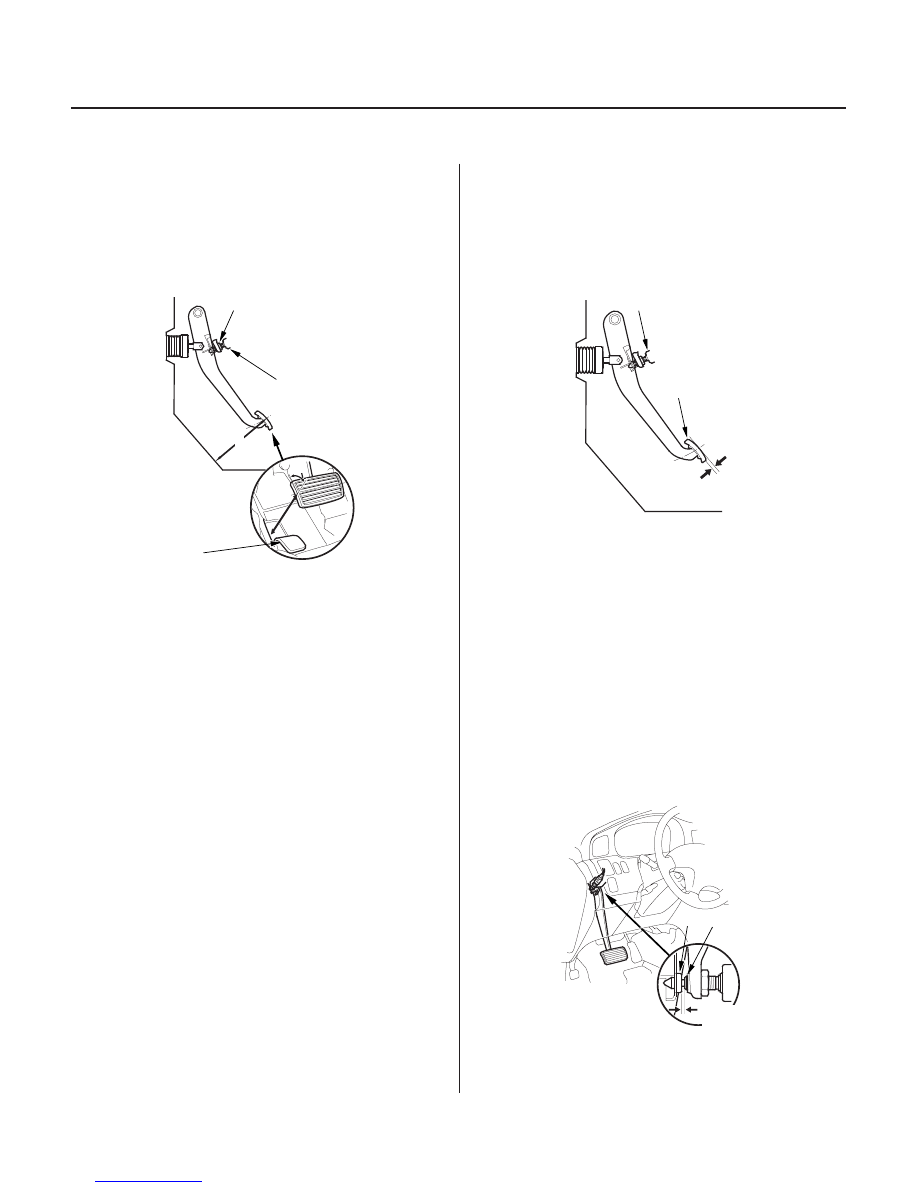Honda Odyssey 2004. Manual - part 300

−
−
01
13
12
S0X4A00D14300014801MCAT00
Pedal Height
Standard Pedal Height (with carpet removed):
164 mm (6 7/16 in.)
Pedal Free Play
Free Play: 1
5 mm (0.04
0.20 in.)
Brake Pedal Position Switch Clearance
19-6
Conventional Brake Components
Brake Pedal Height Check and Brake Pedal Position Switch Adjustment
A
B
E
D
C
C
B
A
B
A
0.3 mm
(0.01 in.)
1. Disconnect the brake pedal position switch
connector, loosen the brake pedal position switch
locknut (A), and back off the brake pedal position
switch (B) until it is no longer touching the brake
pedal.
2. Pull back the carpet and the insulator cutout (C).
Measure the pedal height (D) from the middle of
the left side of the pedal pad (E).
3. With the engine off, inspect the pedal free play (A)
on the pedal pad (B) by pushing the brake pedal by
hand.
4. If the pedal free play is out of specification, adjust
the brake pedal position switch (C). If the pedal free
play is insufficient, it may result in excessive brake
drag.
5. Screw in the brake pedal position switch until its
plunger is fully pressed (threaded end (A) touching
the pad (B) on the pedal arm). Then back off the
switch 3/4 turn to make 0.3 mm (0.01 in.) of
clearance between the threaded end and pad.
Tighten the locknut firmly.
Connect the brake pedal position switch connector.
Make sure that the brake lights go off when the
pedal is released.
03/07/29 09:53:48 61S0X050_190_0006